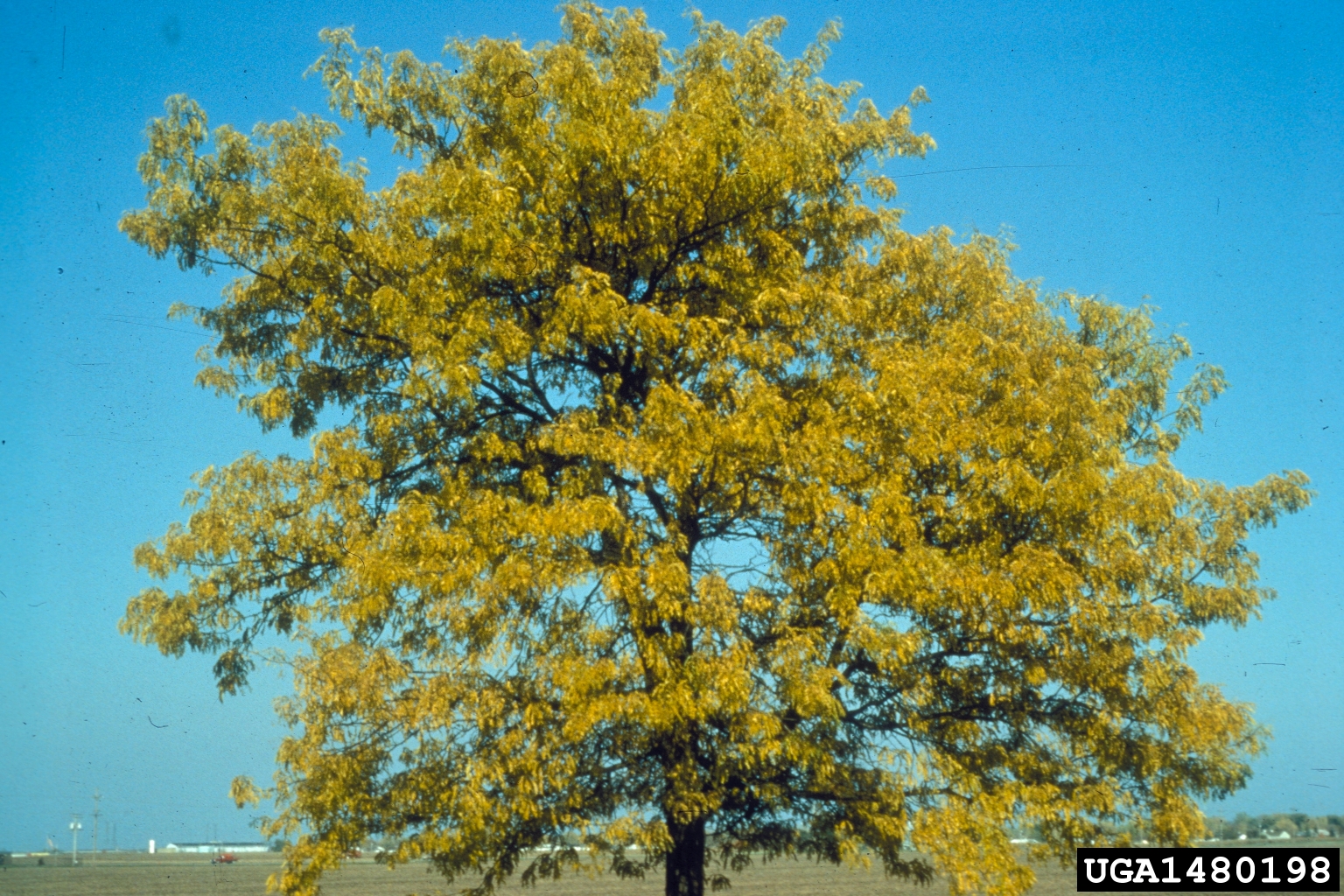Honey Locust
 Gleditsia triacanthos, or Honeylocust, can be found growing in woodlands and abandoned fields throughout the state.
Gleditsia triacanthos, or Honeylocust, can be found growing in woodlands and abandoned fields throughout the state.
Mature Size
Although not related to Black locust, Honeylocust belongs to the legume family. Heights of 30 to 50 feet and a crown spread of 25 to 35 feet are normal. It grows at a moderately fast rate.
NOTE: We try to weed out all of the "thorny" seedlings in the nursery, but occasionally we miss some. We recommend that 10% extra plants be planted in the garden, etc., so that replacements will be available for replacements if any thorns should develop. If there are any thorns, they will be obvious the first year in the field.
Leaves, Stems and Fruit
Leaves may be both once and twice compound on the same tree. Leaflets vary in number, are dark green, and rounded on both ends with a smooth edge. The leaves are borne alternately on the stem. Twigs are red-brown, shiny and form a zigzag pattern. The bark on young trees is thin and light in color, turning almost black with age and broken into strips peeling from around the trunk. Male and female flowers are found on the same or on separate trees. The fruit is a twisted pod 10 to 18 inches in length and contains numerous seeds.
Use
Windbreaks - Honeylocust is an excellent windbreak tree. It can be planted in central rows of a multi-row windbreak. It should be planted where it can receive an abundance of sunlight. It can also be used as a single row field windbreak.
Fuelwood - Honeylocust serves well as a fuelwood species. The wood is moderately dense with high heat yield. Trees grow at a moderately-fast rate and reach harvestable size on good soils within 10 to 15 years.
Adaptation and Soil
Honeylocust has adapted statewide and prefers a moist soil but can do well on droughty alkaline soils. Honeylocust is adapted to a wide variety of soils.
Spacing
Space the trees in windbreaks 10 to 15 feet apart. In fuelwood plantings the spacing may range from 4 x 9 feet to 6 x 12 feet.
Culture
One-year-old, bare root seedlings, 18 to 24 inches tall are used in plantings. Survival is very good when weeds and grasses are controlled. Honeylocust seedlings sold through the Tree Distribution Program are usually thornless. There may be a few trees with thorns. It is advisable to order an additional 10 percent to plant in a separate area to replace the thorny trees after the first year.
Pests
Insects are normally not a serious problem on Honeylocust. Those which cause damage in varying degrees are Mimosa webworm, spring cankerworm, Honeylocust borer and twig girdler. While Honeylocust is relatively free of foliage diseases, it is subject to a stem disease called Tyronectria canker. This